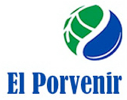It's been on the busy side here in Nicaragua at
El Porvenir, but I had a wonderful visit to the community of La Rinconada, Achuapa this week; I thought it was worth sharing. Our valued partner
Global Water was here to visit the communities and schools they have been supporting.
We drove up from visits to schools in Cuidad Darío and Terrabona the day before and stayed in the new hotel in El Sauce. The following morning, Kathleen and I had an early breakfast then joined Erick for our trip. We took the "highway" to Estelí about an hour drive up - literally - for the most part uphill. We left the vehicle in Campamento and met Chepe from the community of La Rinconada, who had brought down 3 horses for us to ride up on.
 |
| Chepe leads the way as Erick, Kathleen and I follow on horseback. |
We rode for about an hour, across a river and through very muddy tracks - the horses were fantastic, although there were a couple of spots they had trouble getting through. We were pleased to arrive though to a very welcoming community. We saw the well, but also where these families previously collected water.
 |
| This is where Chepe and the nearby families got their drinking water previously. |
The above natural spring was unfortunately open and unprotected and not a good, healthy source of drinking water. The community members told us of the problems they faced with diarrhea and parasites in previous years. Since there was a stream right beside it, any rain overflowed it into the spring; also the animals often bathed in the spring as well, contaminating it. However, what choice did the people have, but to drink the water there?
 |
| The community members proudly show their latrines, nicely decorated with flowers. |
With help from our partner Global Water and others, we were able to provide some of the materials for the project for the community members to build. The community members contributed the labor, sand and rocks for the construction. The community members dug the latrine pits and the well. Then they did all the masonry involved. The well took 18 months (140 person days) to dig and complete.
 |
| The families kindly humored us in holding the banner for the photo. |
Hearing the stories of how the community was before and how they felt now, it reminded me why our work is so important. There is still more to be done, for example, they are requesting 2 more wells in the area and a washing station, but they have made an excellent start. If you can help, please consider it through
our web page or mailing a check. The future is a little brighter for these families and we hope it will continue to get brighter.
Of course, we are in the rainy season, so we got very wet on our way back to the vehicle. It was still worth it though.




















